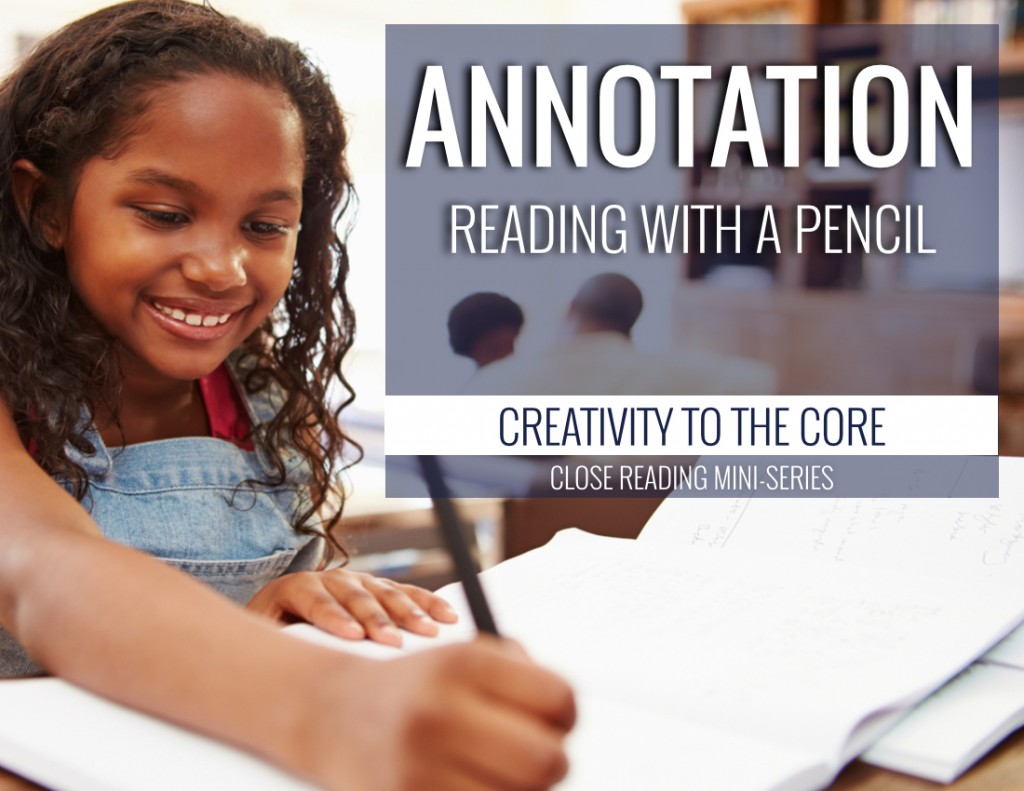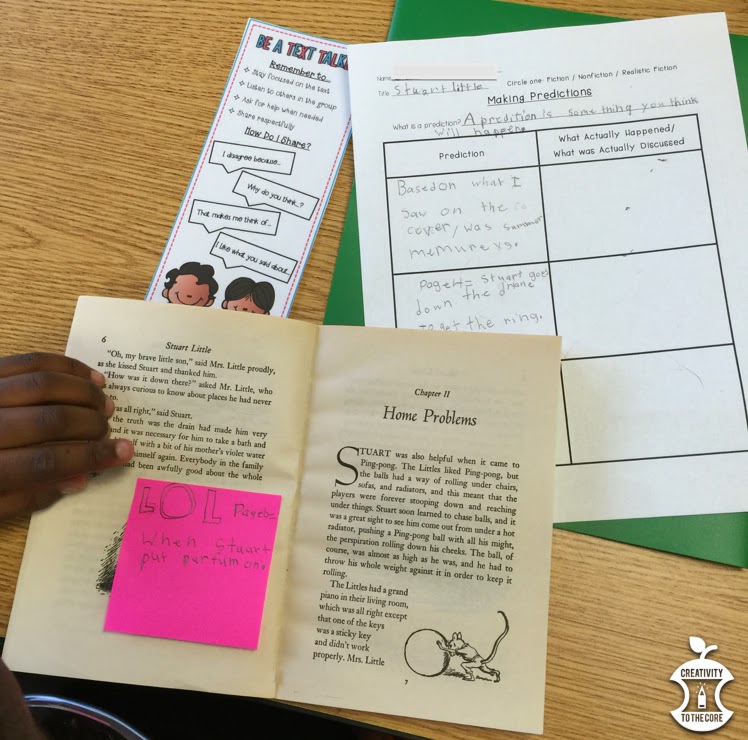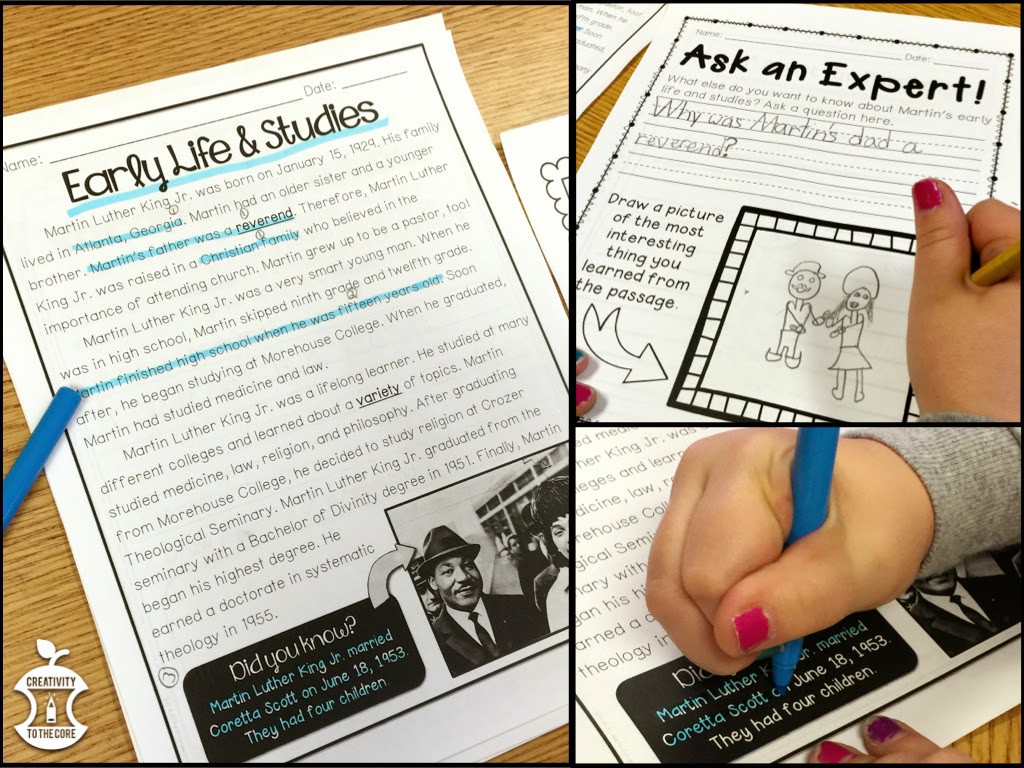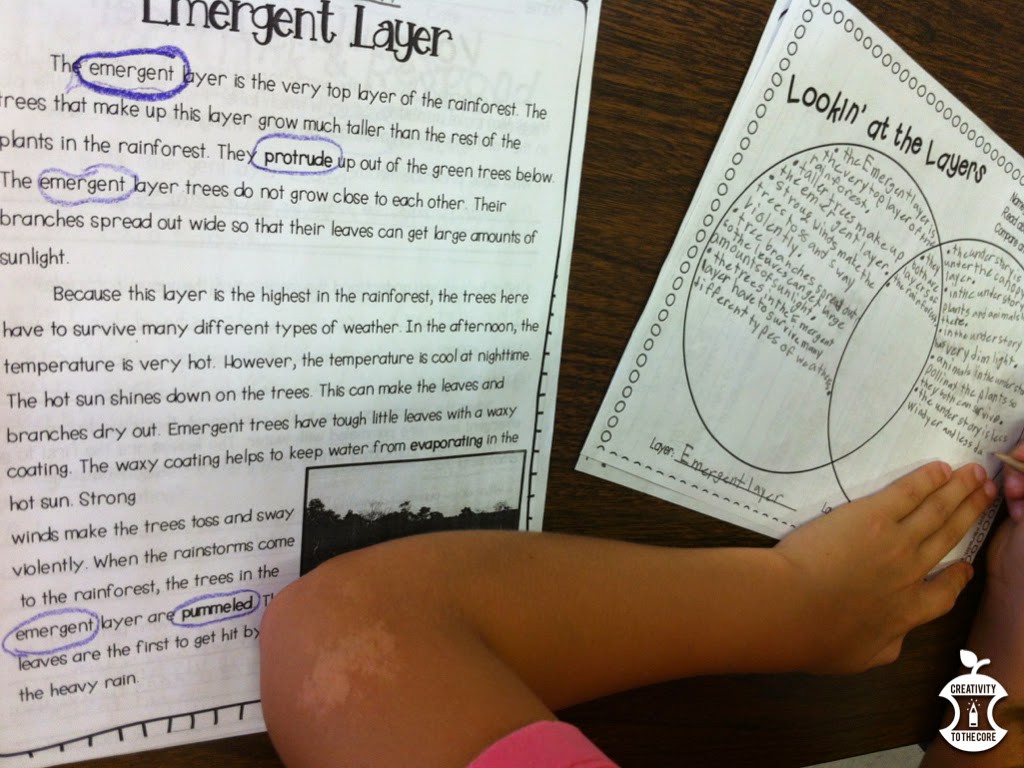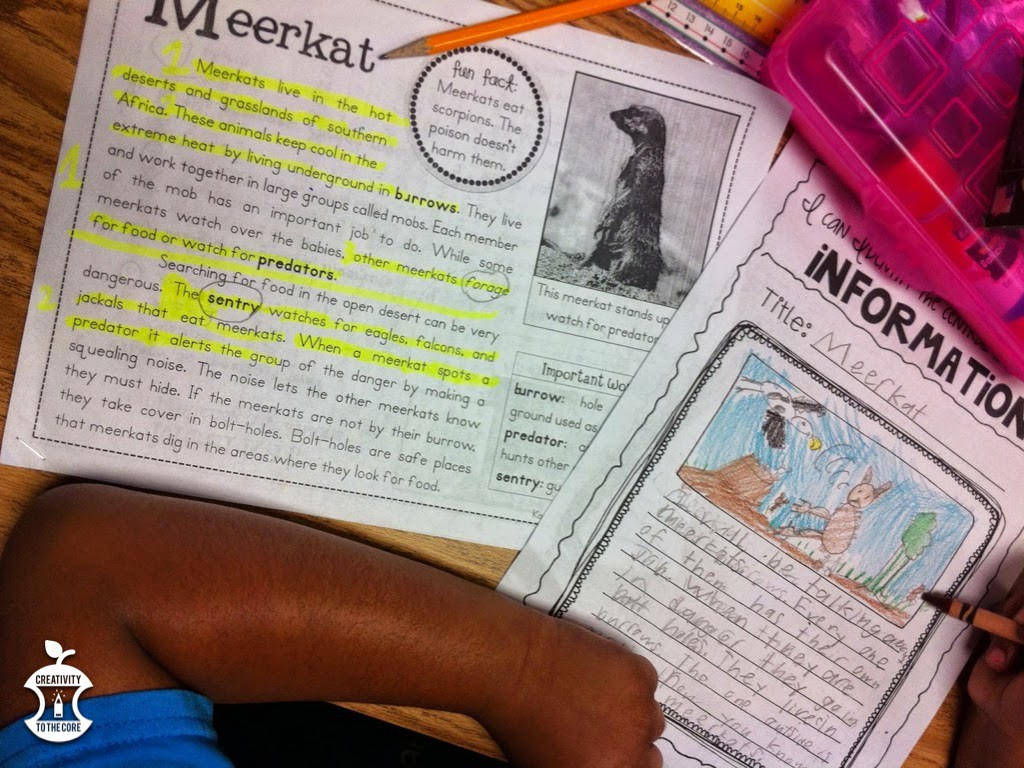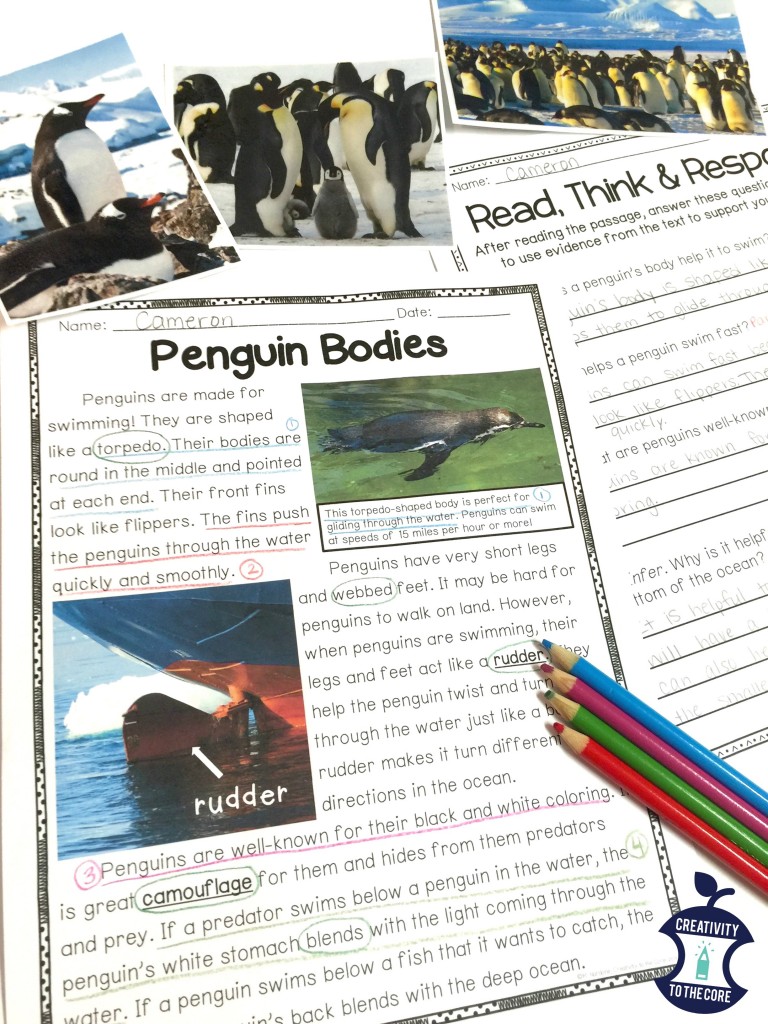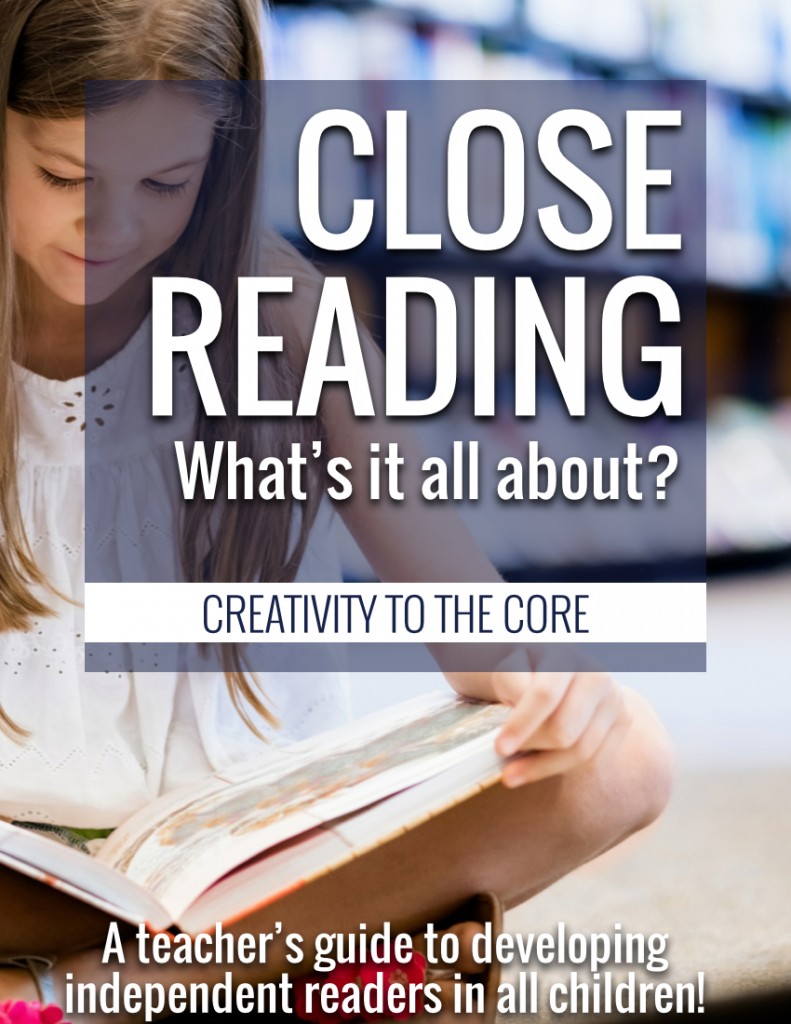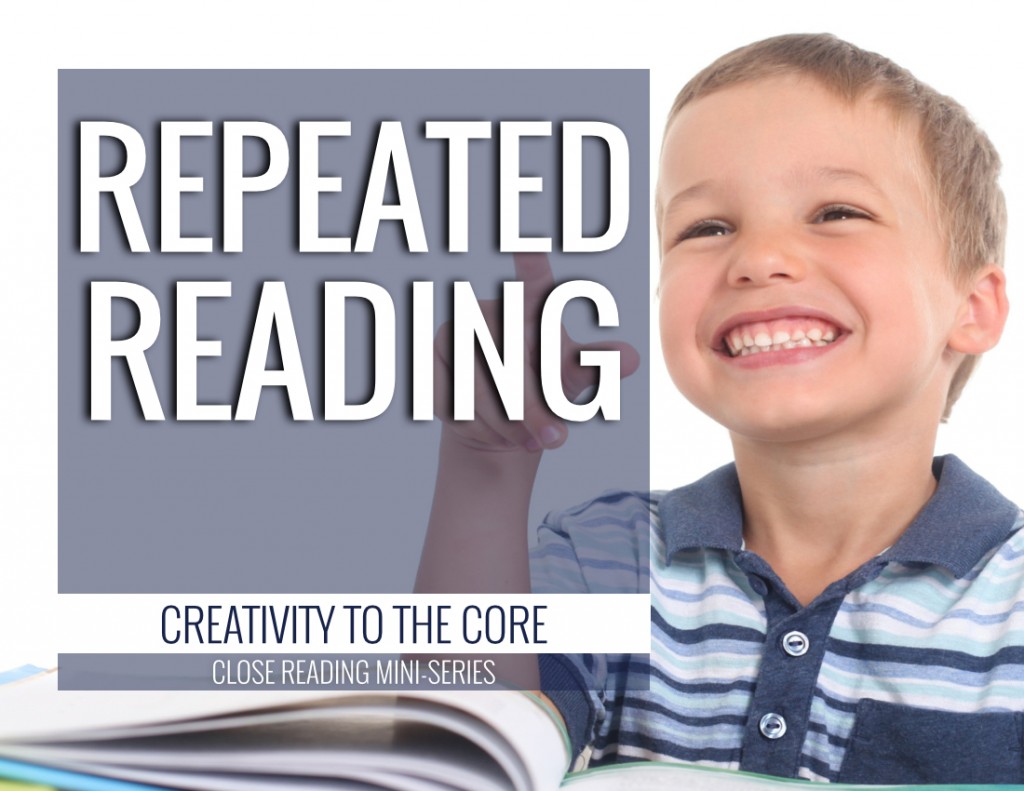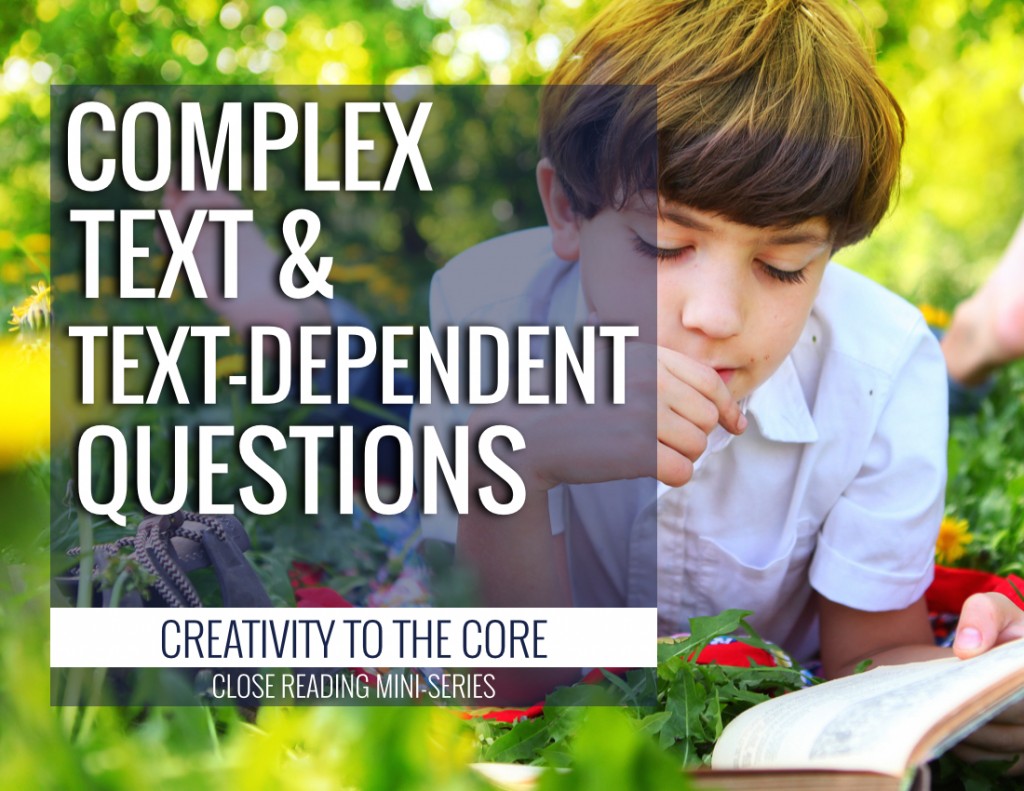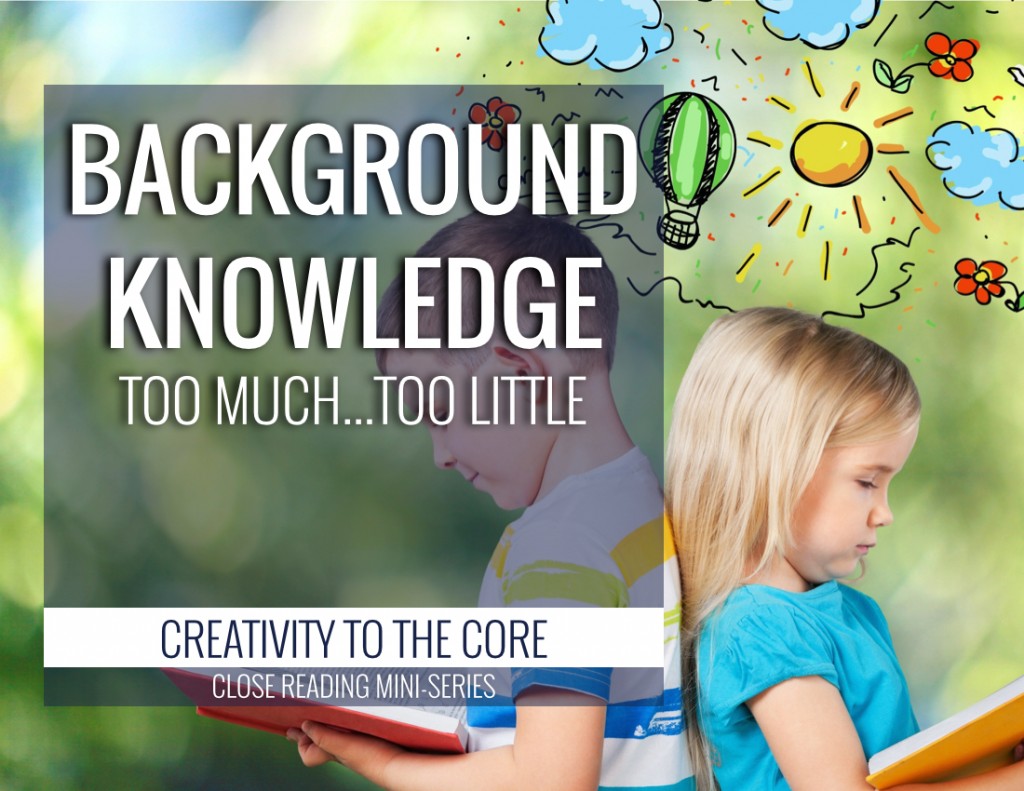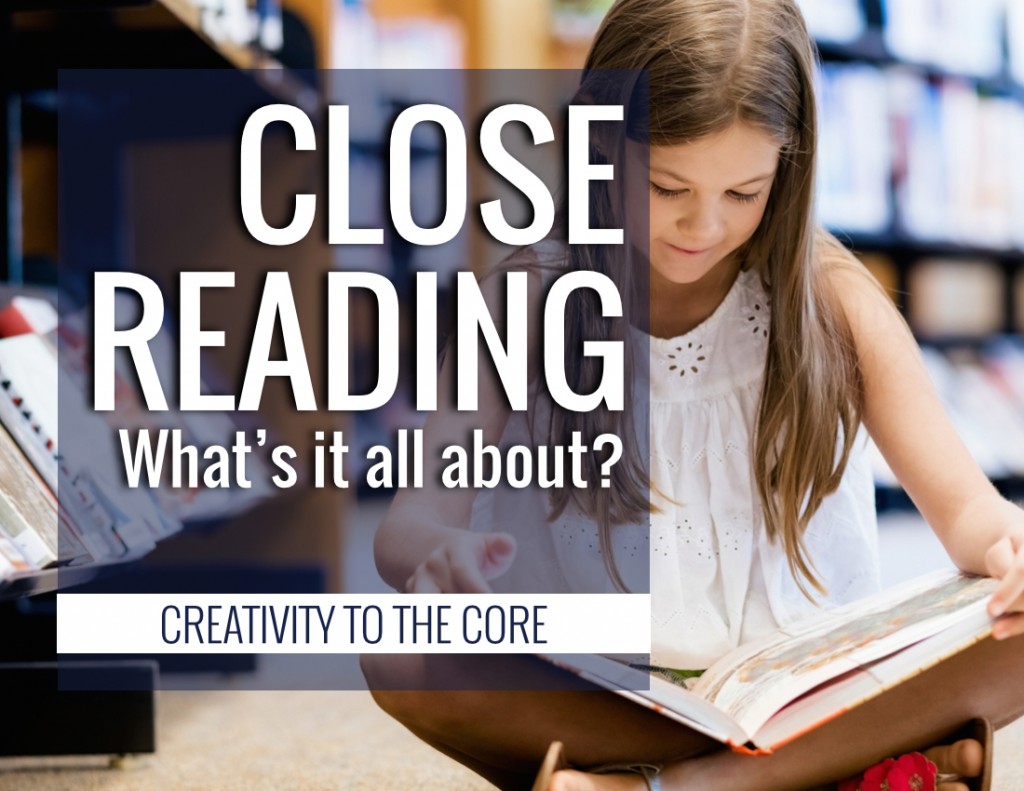Annotation is sometimes known as “Reading with a pencil”. In simple terms, that’s all it is. Students use a pencil while they read to note specific things. Annotation is extremely important when analyzing a text.
Types of Annotation
-Underlining
-Circling
-Noting unknown words
-Noting challenging sections
-Writing margin notes
-Writing on bookmarks
-Writing on sticky notes
In high schools and colleges, students always annotate in text when participating in close reading. Elementary students have very little experience with this. )Most elementary teachers may have very little experience teaching it!)
So, how do you annotate in an elementary classroom? Can you guess? MODIFY!
Ways to Modify Annotation
-Use wiki sticks to underline
-Use colored pencils or highlighters to show unknown words
-Number paragraphs or draw lines to separate paragraphs
-Use only a limited number of annotations
Why Start So Young?
1. It is so important to teach students to do this at a young age. Start in primary! Use some of the modifications above to help you explain “reading with a pencil” to the little ones. As you model a few types, students will begin to use them in the close reading process. I recommend choosing just a few to focus on so that students become comfortable using them and understand why they are using them.
2. THEY CAN DO IT! Believe in them. They are capable of GREAT things!
This is an example of what I would say to students in my classroom last year (high achieving first grade) once we were comfortable with our annotations. I stuck to just 3. Keep in mind that we went over these one at a time earlier in the year.
1. Number the paragraphs to the left of each paragraph.
2. Circle any unknown or tricky words.
3. While answering questions, go back to the text and highlight the evidence. Make sure you have the question number next to your evidence.
Whether you have been using close reading for a while, or are just beginning to, check out my close reading packs. Each pack comes with a weekly layout, passages, vocabulary activities, reading responses, visualizing & questioning handouts, graphic organizers, and writing prompts. Once you’re there, click the preview link under the images to see more before you buy! Also, click the penguin image below to snag a freebie passage to use with your class.
I hope that this mini-series will give you ideas to bring back to your classroom! If you would like to read more about close reading, please see the citation list attached here. Please feel free to email me with any questions at creativitytothecore@gmail.com.

